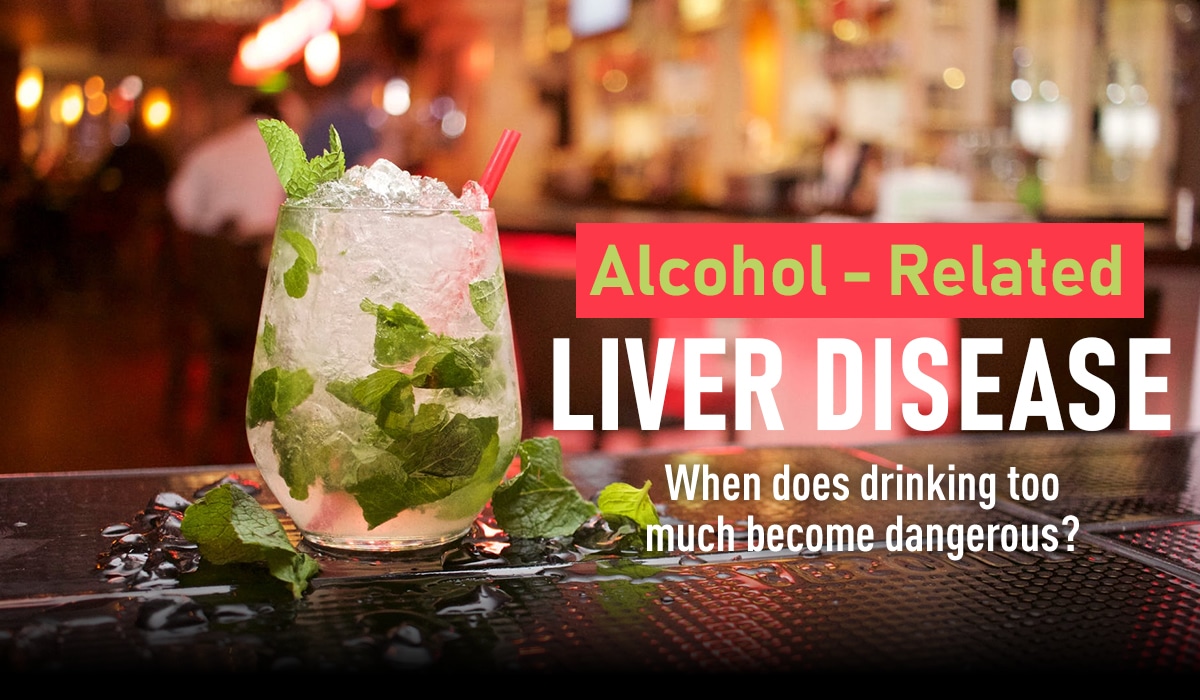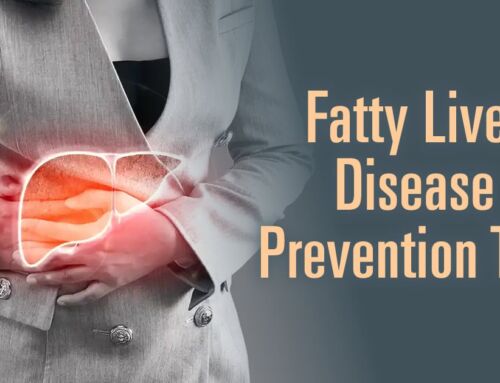Alcoholic liver disease (ALD) can be a frightening but very real complication of drinking in excess. With the social normalization of alcohol consumption in our culture, it’s important to be mindful of how much alcohol you’re actually drinking to avoid the possible life-threatening effects of ALD.
What is Alcoholic Liver Disease?
The liver takes the brunt of the tissue injury that excess alcohol consumption causes. Because the liver is responsible for metabolizing alcohol, it can develop lesions and become inflamed in response to excessive and frequent alcohol use. Chronic alcohol use destroys liver cells and can actually scar the liver.
The lesions, inflammation, and scarring associated with ALD present in the following ways:
- Hepatic steatosis – This is the body’s first response to heavy drinking and develops in more than 90% of those who consume four to five alcoholic beverages per day. Fat accumulation and inflammation develop within the liver making it harder for it to do its job. Hepatic steatosis is reversible if excessive alcohol consumption is stopped.
- Acute alcoholic hepatitis – This is an inflammatory, more severe form of liver injury caused by the toxic chemicals produced by the liver when it metabolizes alcohol. It develops in those who moderately and heavily drink. Stopping drinking at this point may not reverse the condition, but can prevent further harm to the liver.
- Alcoholic cirrhosis – Cirrhosis is a late-stage, terminal form of ALD where the liver is scarred. Alcohol abuse is attributed to 50% of all deaths caused by cirrhosis. At this point, the liver is just barely able to do its job as it’s swollen, stiff, and functioning poorly. This is not reversible.
Risk Factors for Alcoholic Liver Disease
The following risk factors contribute and/or lead to ALD:
- Genetics – Alcoholism itself is linked to specific genes. ALD is also influenced by genetic factors that affect the liver’s susceptibility and ability to function properly.
- Obesity – Obesity is a risk factor for liver disease. When alcohol abuse is combined with obesity, a dangerous combination is created that significantly affects the worsening of liver disease.
- Malnutrition – A lack of nutrients due to poor eating or difficulty absorbing nutrients because of the damaging effects of alcohol.
- Gender – Women are more likely to be affected than men.
- Ethnicity – Hispanic and African American men are more likely to be affected than Caucasian men.
- Other diagnoses such as HIV or Hepatitis C – These diseases often go hand in hand with liver disease. Those with HIV are often hospitalized for complications related to liver disease. In addition, those with hepatitis C are already dealing with a taxed liver, which will only be worsened by alcohol.
Signs and Symptoms of Alcoholic Liver Disease
Typically patients are asymptomatic, particularly in the early stages of the disease. As the disease progresses, patients may experience the following symptoms:
- Jaundice
- Fever
- Weakness
- Nausea
- A build-up of fluid in the abdomen
- Vomiting
- Diarrhea
- Decreased appetite and weight loss
- Blood in stools
- Pain in the abdomen
When to See a Doctor
The symptoms of alcoholic liver disease can have the appearance of other health issues. If you experience any of the symptoms previously mentioned, drink more than the recommended limits and/or have a family history of liver disease you should discuss these with your doctor. If you have any questions regarding liver disease, please call the office at 210-615-8308 or request an appointment online and we would be happy to assist you.
Diagnosis
Regardless of whether the patient is asymptomatic, the workup will be the same no matter the cause of their liver disease. They all get lab work to rule out other possible underlying causes (autoimmune, viral, hereditary) and they all get imaging to look for degrees of fibrosis, cirrhosis, portal hypertension and cancer.
Patients testing positive will then be put in a surveillance program of imaging/lab depending on the degree of advancement of their disease. If advance fibrosis/cirrhosis is NOTED, I will send the patient to the Transplant/Hepatology team to be followed more closely.
TIP: Do not understate the amount of alcohol you drink when asked by your doctor. Providing accurate information as best you can during your evaluation will help your doctor best diagnose your condition.
Treatment for Alcoholic Liver Disease
There are several treatment options that may be recommended for ALD such as:8
- Abstinence – Once diagnosed with ALD at any stage, that individual must maintain abstinence from consuming alcohol. For those that consistently drink more than the recommended daily limits (1 drink/day for women & 2 drinks/day for men), they should seek help from a medical professional to safely manage alcohol withdrawal. It’s also important to have support with this commitment from groups such as Alcoholics Anonymous to avoid relapse.
- Medications – Antibiotics & steroids may be prescribed to decrease inflammation and minimize infection.
- Nutrition – Various supplements and diet changes are advised to correct the malnutrition present. IV nutrition therapy or a feeding tube may also be recommended based on severity.
- Liver transplant – For individuals with advanced alcoholic cirrhosis, their doctor will discuss medications and the possibility of a liver transplant. However, this isn’t an option for active alcoholics. You must abstain for a minimum of six months prior to transplant and sign an agreement to never resume drinking alcohol again.
The survival rates in the U.S. for each type of ALD are as follows:
- Hepatic steatosis – With complete abstinence from alcohol, it has a 100% survival rate.
- Acute alcoholic hepatitis – The 30-day mortality rate ranges from zero to 50% based on individual scenarios.
- Alcoholic cirrhosis – The survival rate varies greatly depending on the severity of damage to the liver. The two-year survival rate ranges from 35-85%.
Overall, the five-year survival rates for ALD as a whole is 60% when abstaining from alcohol and less than 30% in those who continue to drink.
Alcoholic Liver Disease FAQs
Can alcohol lead to fatty liver disease?
Yes, it’s referred to as alcoholic hepatic steatosis. Heavy alcohol use leads to fatty liver disease, especially in those who have been drinking for a long time. The more you drink, the more your liver is damaged. The liver breaks down alcohol, but this process produces harmful substances that weaken your immune system, create inflammation, and damage liver cells.
Can alcoholic liver disease (ALD) be reversed?
ALD can be reversed in the early stages, but once end stages are reached, further damage can only be limited.
Can non-alcoholic liver disease be reversed?
The early stage of non-alcoholic liver disease is reversible but isn’t reversible at the end stages. At that point, it can only be managed.
How does alcoholic liver disease cause jaundice?
As liver function worsens, yellowing of the skin, eyes, and mucous membranes called jaundice develops. This is typically a late-stage sign of alcoholic liver disease (ALD). It’s caused by a poorly functioning liver that’s having a difficult time flushing excess bilirubin out of the body. A normal liver has no issue processing this waste product out of the body, but in ALD it accumulates in tissues and the bloodstream.
What causes alcoholic liver disease?
ALD is caused by years of heavy drinking that progresses over time. The longer you’ve been drinking and the more alcohol you’ve had, the more likely you are to be diagnosed. It doesn’t occur in everyone who drinks, but there are several risk factors that put you at increased risk for developing the disease.
Does everyone’s liver react the same way to alcohol?
Everyone’s liver has the job of breaking down alcohol, which produces harmful substances that weaken the immune system, create inflammation, and damage liver cells. The more alcohol consumed, the more damaged the liver will be. While some people are more likely than others to develop ALD, not everyone will develop the disease who drinks heavily and for long periods of time.






